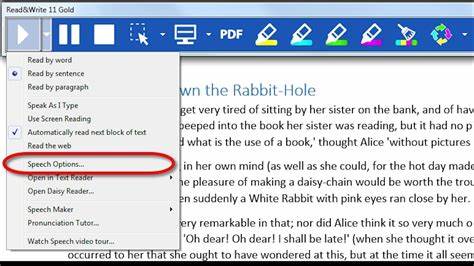Using Assistive Technology to Support Students with Learning Disabilities and Psychosocial Impairments

Stellenbosch University, a public research university located in the Western Cape Province of South Africa, has taken the initiative to expand their academic support services by using assistive learning technologies as a tool to promote disability inclusion. This initiative, led by the Disability Unit, following the guidelines of the university’s Disability Access Policy, has made efforts toward providing an enabling learning environment for persons with disabilities including learning disabilities and psychosocial impairments. To support this goal, a wide range of specialized assistive software has been made available to the university community with a broad spectrum of reasonable accommodation needs.
“For a lot of students I speak to, assistive technology is the only thing they have going for them that supports them,”
Rudi le Roux, Stellenbosch University.
Le Roux’s role at the university is to support students and staff in understanding what assistive technology is available, how it works, and to help find the best fit for each individual. “I translate the technology for learners, because they do not always know what is out there and what would work best for what people.” le Roux explains.

Assistive technology for Learning Disabilities and Psychosocial Impairments
Often, there is a tendency to think of assistive technology as an accommodation for students with visual impairments, as JAWS is a well known tool, however software exists that can support learners with all types of learning needs.
Le Roux explains that while universities are prone to considering diagnoses like Attention Deficit Hyperactivity Disorder (ADHD) and Autism, when allocating assistive technologies, they often pay less attention to other types of learning disabilities, and psychosocial impairments. Tools like Read and Write, a literacy software designed to support reading, research and organization, can be used for these learners across the neurodiversity spectrum, as it allows students to learn course material in ways that can be less stressful and exhausting, as well as providing features that cater to the individual needs of those with specific learning challenges such as Dyslexia. Providing this kind of software can go a long way towards creating an inclusive environment for all learners.
“My approach to inclusion is to create a healthy learning environment and exam environment to address all of those little needs that students have. With the Read and Write, you can learn by listening. The software has a lot of mixed tools in it that integrate with everything that you use, even Adobe programs. It uses the five-module approach, which uses your hearing to bolster learning activities. It will highlight your paragraph yellow, and allow you to control the tempo of the reading. There's a tool where you type in a word, and it shows you a picture of what that word means. There are also research tools that allow students to collect relevant information from multiple sources into one document”
Rudi le Roux, Stellenbosch University
According to le Roux, the software works for most students. “From the experience of students, the software works. Technology can allow someone who is blind to use software the same way we do. For learning disabilities, and psychosocial impairments, it is exactly the same thing. If you are sitting here, reading the same article over and over again, assistive technology helps to save time and get to what matters.”

